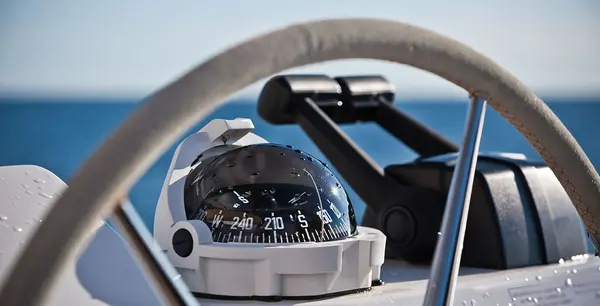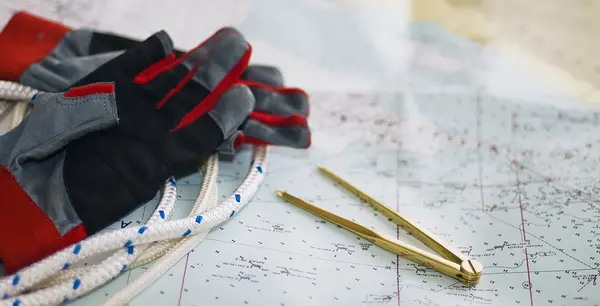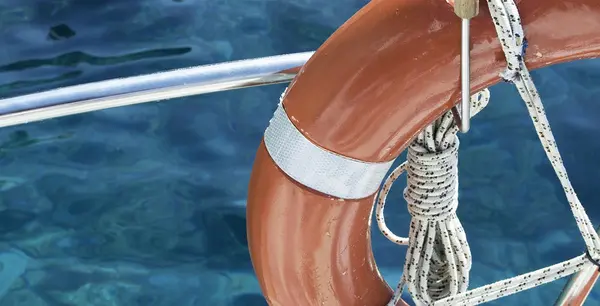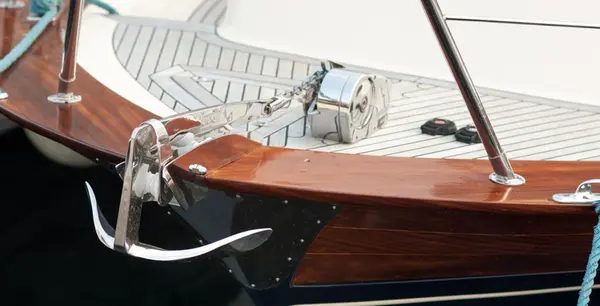The boat is already waiting in the harbour and you're fishing around in your mind for what to check before setting sail. We've put together a list of the most important things to look for when taking over your boat. Take it step by step. The main thing is to have the charter company show you all the important things and check their condition and function. Let's explore a yacht's equipment together!
3 reasons to inspect the boat thoroughly
- Enjoy the voyage right from the word go. You’ll set sail reassured that everything works and is in its place. When taking over you will refresh your skills and knowledge.
- Avoid any unpleasant surprises when returning the boat or paying any unnecessary fines. All faults will be recorded and detected in advance.
- Sort out any crisis at sea quickly, efficiently and with a clear head. All your energy can be devoted to sorting out the problem and not searching for life jackets, harnesses, pumps or tools.
What gear to check on board?
Check everything thoroughly and always make sure that the piece of equipment is actually on board, in sufficient numbers and in good condition. Check the functionality of all the important equipment yourself. Find all defects or missing items and record them on the checklist. And now to the boat inspection itself!
YACHTING.COM TIP: Share the equipment list with crew members, they will get a basic overview and when you train them on the boat they will have an idea of what you are talking about. Remember to also tell them the 7 key things to remember before setting sail. And it doesn't hurt to mention the rules of sailing etiquette.
Dive below deck
Electrical equipment
- Switches and circuit breakers (on the main panel on the wall next to the navigation table).
- Battery and water status indicator (on the main panel).
- Anchor windlass, its controls and circuit breaker (usually hidden somewhere).
- Navigation lights, including replacement bulbs.
- Navigation devices and autopilot, echosounder.
- Radio.
- Fuses.
- Pump.
What to focus on: View the main panel, which will show you how the switches and circuit breakers are functioning. Turn on the radio, the lights, check the battery recharging and GPS. Try pulling anchor to check the condition of the windlass.
 Helm and navigation
Helm and navigation TIP YACHTING.COM: The battery drains quickly, especially draining are the refrigerator and anchor windlass. If you are sailing without a motor, which recharges the battery, or intend on harbouring at places without a connection to the grid, it is best to warn the crew of the limited resources. Show the crew the beauty of wild matted hair! Hairdryers and straighteners should be left at home.
Navigation aids and documents (on the navigation table in the saloon)
- Paper maps, their condition and if they cover the entire route.
- Navigation aids (dividers, pencil, rulers, compass).
- Binoculars (although the ability to Estimate Distance at Sea by Eye will also come in handy)
- Yachting documents (voyage permits - in Croatia the so-called Prijava, liability insurance, the concession permit required in Croatia, crew list).
 Navigation map
Navigation map Engine and fuel
- Engine and transmission oil.
- V-belt tension, fuel filter.
- Coolant level and check the coolant water inlet valve.
- Check the fuel level in the tank, the fuel tank is usually located under the double bed in the cabin.
What to focus on: Perform a visual inspection of the engine. Can you see anything leaking? You should ask to be shown access to the engine. Start the motor, shift into forward and reverse to determine the condition of the propeller.
Most popular sailing destinations: where to sail?
Safety equipment
- Life jackets.
- Life belts (harnesses).
- Flares.
- Fire extinguishers.
What to focus on: Inspect everything thoroughly and always make sure that each piece of equipment is actually on board, in sufficient numbers and in good condition.
 Life buoy
Life buoy Water, toilet and bathroom
- Water tanks (usually two and under the double bed in the cabin).
- WC (valves), holding tank switching and draining.
- Draining water properly from the shower.
- Shower at the stern.
What to focus on: Check the water status in the tanks (the status indicator is not reliable). Check where their switch is. Typically, only one tank is connected at a time and when the water runs out you need to switch over to the other full tank.
YACHTING.COM TIP: A clogged toilet has already made vacation unpleasant for many a seasoned sailor and you've probably heard some funny stories yourself. Be sure to explain the workings of the toilet to the crew as soon as possible. After all, a clogged faecal tank is a very common reason for forfeiture of the bail. If you plan to avoid marinas, also warn the crew about the limited capacity of the water tanks.
Galley
- Refrigerator (in summer the refrigerator is the second most important thing on the boat, after the engine).
- Stove (leans to keep pots as level as possible).
- 2 gas cylinders (check how full they are and the reserve).
- Gas tap.
Cabins
- Bedding (included).
- Storage space.
And on deck
Sails and controls
Try packing and rolling up the sails, rope tension
- Stoppers, winches, condition of the ropes.
- Rudder (test the play of the steering wheel to the left and right).
- Sails (condition, damage, controls).
 Tensioning the rope of the main sail
Tensioning the rope of the main sail Hull
- Boat’s deck and the space under the floors (scratches, presence of water, condition around the screws).
- Sides of the hull (can be damaged or scraped if fenders haven’t been used enough).
- Bow (damage might be primarily caused by the anchor).
- Stern (damage from the harbour mooring when manoeuvring).
- Below the waterline (check preferable outside the marina - scrapes, wrapped rope around prop).
 Anchor
Anchor What’s in the lockers (storage areas, especially under the benches on deck and in the saloon)?
- Emergency tiller (here it is a good idea to put it on and use it).
- Mooring ropes.
- Reserve anchor.
- Bucket and scrubbing brush.
- Lever for manual bilge pump.
- Paddles, pump for the dinghy (check to make sure it fits in) and paddle hooks for the dinghy.
- Power extension cable, etc.
- Cable cutter.
- Life buoy.
- Rescue buoy with light.
TIP YACHTING.COM: There is usually enough free space in the batiste - for example, for storing water bottles, beer, snorkeling gear. If you want to know what to bring on the boat, our article What not to forget to bring on the boat will help you.
What is often overlooked when checking the boat?
- Bosun’s chair for climbing the mast.
- Spare parts (spare belts for the main engine and rubber impeller for the salt water feed pump for engine cooling).
- Small dinghy and its condition .
TIP YACHTING.COM: Download a sample inventory list in several languages.
So are you in the mood yet? In our search engine you’ll find the latest offers. Each boat is described in detail, so you can see your dream equipment before booking.
- Sailboat Deals°
- Catamarans Deals°
- Motor boat deals°
